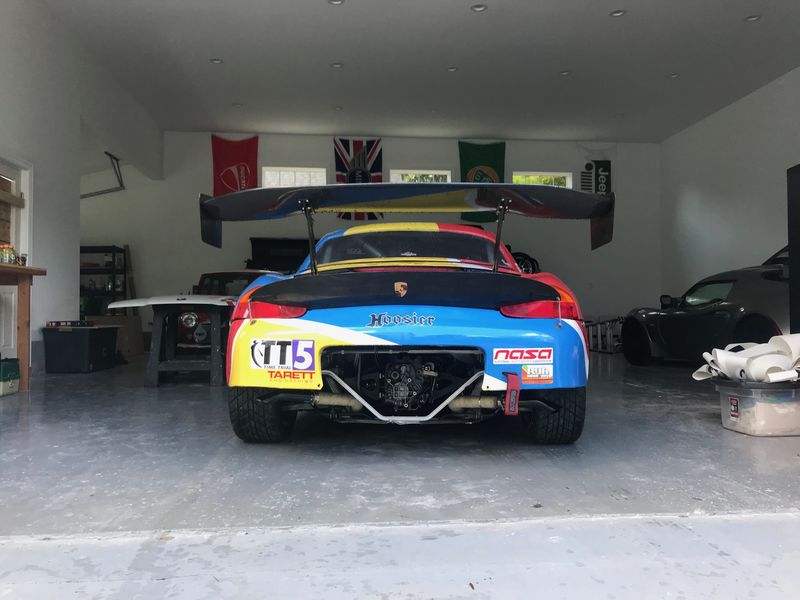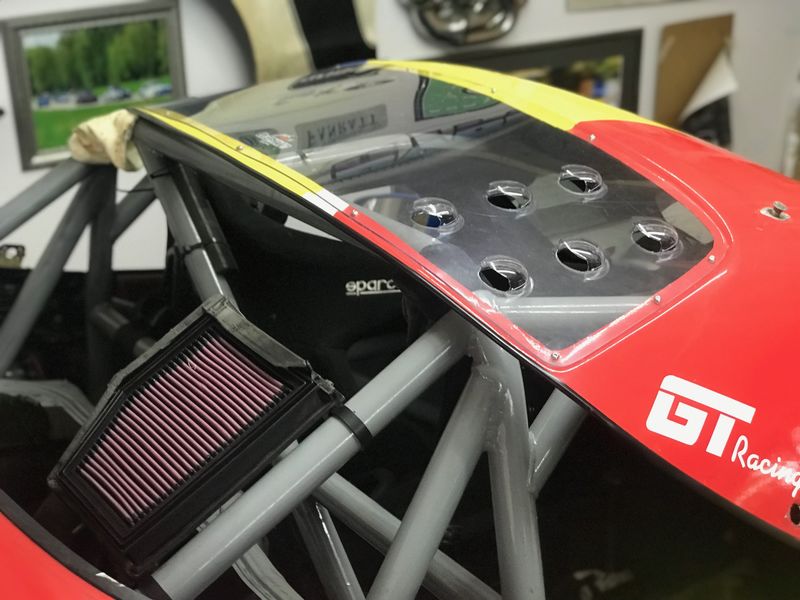Quote:
so - downforce *and* reduction in lift. two things happening here.
original centre rad is tilted down; air passes through rad and is deflected down and under the car. this creates upforce (ditto the side rads which deflect air downwards; good diy on pelican about how to vent your wheel well liners to introduce air into the wheel well instead).
this also introduces air under the car which creates lift. car is shaped a bit like an airfoil; air traveling under the car follows a straight line, while air traveling over the car follows a curved, longer path. since the air all has to finish at the same place at the back of the car then the air traveling over the car has to move faster. pv = nrt so this air is less dense and creates a low pressure area above the car - lift. the more air moving under the car and the move lift is created. this is the reason for splitters and side skirts - to limit this air. this is also the reason for rear diffusers - to extend the travel distance of the air under the car and reduce the lift effect; a big enough gain that the latest porsche 911 rsr is mid-engined - to make more room for the diffuser.
so, design your system accordingly. porsche did. the gt3 'smile' vent is the same thing. if done properly w oem parts the centre rad is angled the opposite direction and there is an oem duct that sits behind it to direct air upwards - 99657532530.
have a look at the attache photo - note the low pressure area on the roof - lift. but also notice the low pressure area on the front of the hood - this is where the gt3 vent is located - the low pressure assists w extraction and airflow over the rad. move it further back and the pressure increases. note also the low pressure over the front wheel wells; if you do decide to vent your side radiators into your wheel wells, a great way to vent the wheel wells is a fender vent located in this low pressure area - turn upforce into downforce.
|
The rads dumping air down is definitely a problem I cut holes in my wheel wells to vent to the wells which also isn't great. I was thinking about venting the rear of the wells so the air didn't eventually go under the car but I'm probably getting carried away. I do have a splitter (or did before I hit a tire wall last year) to help reduce the air under the car, I'll remake it after the hood project.

Quote:
|
this additional airflow over the top of the car interacts with what is hanging off the back; again downforce vs lift. a big wing hanging off the back will create downforce, while a 'spoiler' (gurney flap?) is designed to kill airflow; creates dead air in front of it which forces the airflow over the top of the car to delaminate from the car and kill the lift effect. this delamination takes work, however, too much and you increase the energy required to push the car through the air. of course a wing and a spoiler work in conjunction; spoiler has to be in clean air to work.
|
I went went for both (spoiler and wing), the wing resulted in the most lap time and grip improvement but with just the spoiler I increased my top end and saw a small improvement in lateral acceleration. So no downside at all

Quote:
Here's a link to where Fred posted his basic Boxster aero at 180 kph.
https://www.flickr.com/photos/gtcollection/with/32589573982/
Although it's the stock aero, its a good starting point to see where you want to adjust the flow. Center-line cross section of Speed, Density, Pressure, and Turbulence. Just be mindful that as you bend or compress the air, you add more drag.
|
Great info, last year I rerouted my intake to my rear windshield due to a complication with installing a 2.7L engine with a 2.5L manifold (probably could have made the stock setup fit with some fab but this was way cooler) and ever since I've had people come up to me and tell me its a bad location due to the lower pressure on the rear window. Looking at the graphs it isn't actually that bad!
